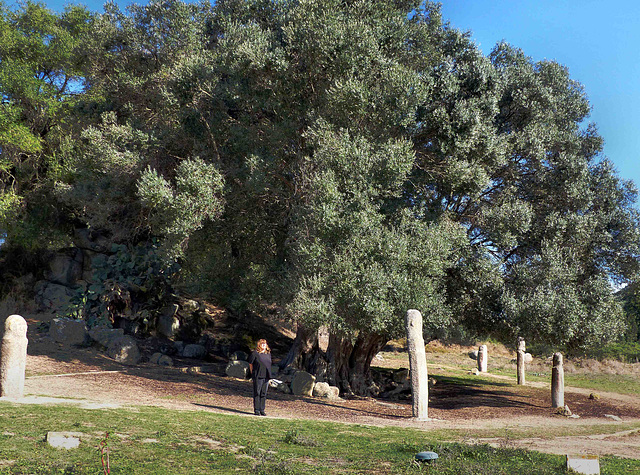Location
See also...
Keywords
Authorizations, license
-
Visible by: Everyone -
All rights reserved
-
81 visits
Filitosa


The island of Corsica is one of the 18 regions of France. It was colonized the Carthaginians, the Greeks, the Etruscans and the Romans. After the Roman empire collapsed, Corsica got invaded by the Vandals and the Ostrogoths. For a short while the island belonged to the Byzantine Empire, then the Franks granted the island to the Pope, in the early 11th century Pisa and Genoa together freed the island from the threat of Arab invasion. The island came under the influence of the Republic of Pisa, later it belonged to Genua for centuries. In 1755 after a long fight for independence from Genoa the independent Corsican Republic was proclaimed, but in 1769, when the island was conquered by France. As the areas near the coast over centuries have been threatened by attacks and raids of pirates many old hamlets and dwellings are wide inland, high in the mountains.
Filitosa is a prehistoric site occupied from the ancient Neolithic until Antiquity. It is known for its spectacular concentration of menhirs statues with many details.
The menhirs came from a quarry, just behind. As soon as a block was chosen the workers dug mortises in the rock with hammers. Then wood wedges were hammered in which got soaked with water. They slowly expanded and so broke the rock. Here are five statue menhirs and a tourist who obviously tries to mimic one. Very bad mimicry! The menhirs were carved with granite and rhyolite hammerstones. They were all (but the tourist) located here around 1300-1000 BC. The olive tree behind did not exist then, as the tree is only about 1200 years old.
Filitosa is a prehistoric site occupied from the ancient Neolithic until Antiquity. It is known for its spectacular concentration of menhirs statues with many details.
The menhirs came from a quarry, just behind. As soon as a block was chosen the workers dug mortises in the rock with hammers. Then wood wedges were hammered in which got soaked with water. They slowly expanded and so broke the rock. Here are five statue menhirs and a tourist who obviously tries to mimic one. Very bad mimicry! The menhirs were carved with granite and rhyolite hammerstones. They were all (but the tourist) located here around 1300-1000 BC. The olive tree behind did not exist then, as the tree is only about 1200 years old.
- Keyboard shortcuts:
Jump to top
RSS feed- Latest comments - Subscribe to the comment feeds of this photo
- ipernity © 2007-2024
- Help & Contact
|
Club news
|
About ipernity
|
History |
ipernity Club & Prices |
Guide of good conduct
Donate | Group guidelines | Privacy policy | Terms of use | Statutes | In memoria -
Facebook
Twitter

Sign-in to write a comment.